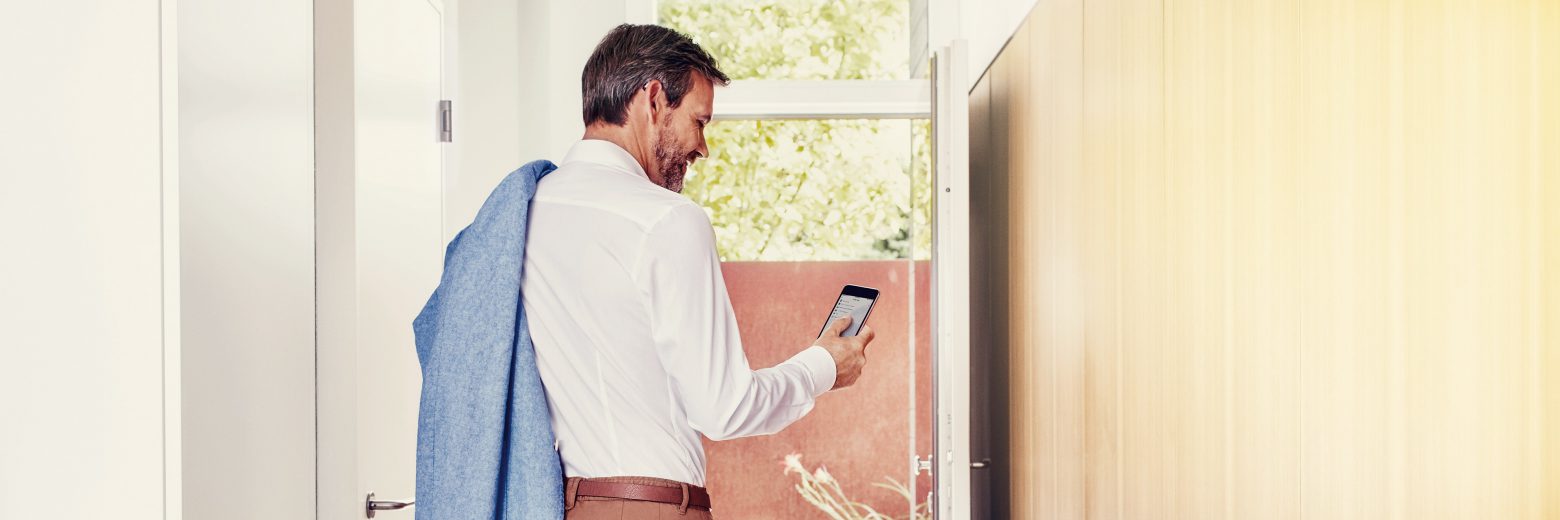The Case for Bilateral Wireless Streaming During Phone Use
Rebecca Herbig AuD

With the recent boom in hearing aid connectivity technology, hearing aid wearers now have more options for a satisfactory experience when listening on the phone. As the more traditional coupling methods, such as the use of a t-coil, decline in popularity due to usability and sound quality limitations, an increasing number of wearers are relying on Bluetooth to stream phone calls to their hearing aids. Some options on the market which feature streaming to both ears contend that the bilateral signal fosters better speech intelligibility, but is this supported by research evidence, or just conjecture?
Proponents of bilateral streaming contend that two ears are always, or nearly always better than one. By routing the phone signal to both ears at the same time, binaural hearing effects boost the signal and helps the hearing aid wearer better understand phone conversations, particularly in noisy situations (Figure 1). Generally speaking, this effect has been proven in multiple studies for decades using traditional amplification, but does it still hold true with wireless streaming from the phone?

Although traditional wisdom contends that it’s always better to hear the same sounds with both ears, some have argued that presenting different signals to different ears ensure that wearers don’t miss out on anything from the soundscape (Figure 2). An example of this are proponents of mixed directional microphone systems. They argue that having one hearing aid in directional mode is sufficient for speech understanding in noise, while having the other hearing aid in omnidirectional mode allows the wearer to maintain better environmental awareness. Can this same argument be made for wireless streaming for phone conversations? In other words, is it better to hear the phone conversation with only one ear while the other ear is left “free” to hear the sounds in the immediate environment?

Marketing claims aside, let’s review some recent literature on this topic to see where the science stands. Even though the streaming of phone signals via Bluetooth is a recent technological development, the benefit of hearing the phone signal in both ears has already been documented in a few studies as outlined below.
Picou, E. M. & Ricketts, T. A. (2011). Comparison of wireless and acoustic hearing aid-based telephone listening strategies. Ear and Hearing, 32(2). 209-20.
This study measured unilateral and bilateral telephone speech recognition performance in multiple conditions. Results showed that speech recognition performance in noise was significantly better in the bilateral wireless routing condition. In open fittings, the bilateral listening condition has a 20% advantage over the unilateral condition whereas in closed fittings, this advantage is almost 40% (Figure 3).

Picou, E. M. & Ricketts, T. A. (2013). Efficacy of Hearing-Aid Based Telephone Strategies for Listeners with Moderate-to-Severe Hearing Loss. Journal of the American Academy of Audiology 24. 59-70.
Two years later, the same team of researchers revisited the same topic, but for those specifically with moderate-to-severe sensorineural hearing loss. The results of this study showed that although unilateral routing options (telecoil and wireless streaming) offered improvement, speech recognition performance and subjective ratings of ease and comfort were best when bilateral wireless routing was used (Figure 4).

Wolfe, J., Schafer, E., Mills, E, John, A., Hudson, M., & Anderson, S. (2015). Evaluation of the benefits of binaural hearing on the telephone for children with hearing loss. Journal of the American Academy of Audiology 26(1). 93-100.
In this more recent study, Wolfe and colleagues examined speech recognition in children with hearing loss. When listening on the phone with an ear-to-ear streaming feature, the children performed significantly better when listening in a bilateral condition, as compared to a unilateral condition.
While it is well-accepted that wireless streaming of the phone signal provides a better result than listening to the phone acoustically, research consistently shows that bilateral routing of the phone signal provides an even greater advantage than when the signal is only heard in one ear. For optimal listening results on the phone therefore, wearers will most likely be more satisfied with wireless solutions which stream the conversation to both ears. Even if an acoustic coupling is used, hearing aids which stream the acoustic phone signal to be audible in both ears is still preferable.
Furthermore, environmental awareness does not need to be sacrificed to bilateral phone streaming. These solutions typically allow the hearing care professional to fine-tune streaming parameters so that the microphone signal can be mixed with the streamed phone signal at the desired level. This way, the awareness of the immediate acoustic environment can be maintained while speech recognition on the phone is optimized. In fact, since sounds in the environment can be heard in both ears in this solution, spatial hearing can be maintained. This is arguably another advantage over monaural streaming which delivers the phone signal to one side and environmental sounds to the other, limiting spatial cues.

Rebecca Herbig, Au.D., is a Clinical Education Specialist for Sivantos USA. Since 2008, Dr. Herbig has been responsible for various aspects of scientific marketing, both globally and specific to the US market. Prior to joining Sivantos, she worked as a clinical audiologist in northern Virginia. Rebecca received her doctorate in Audiology from Gallaudet University in Washington DC.